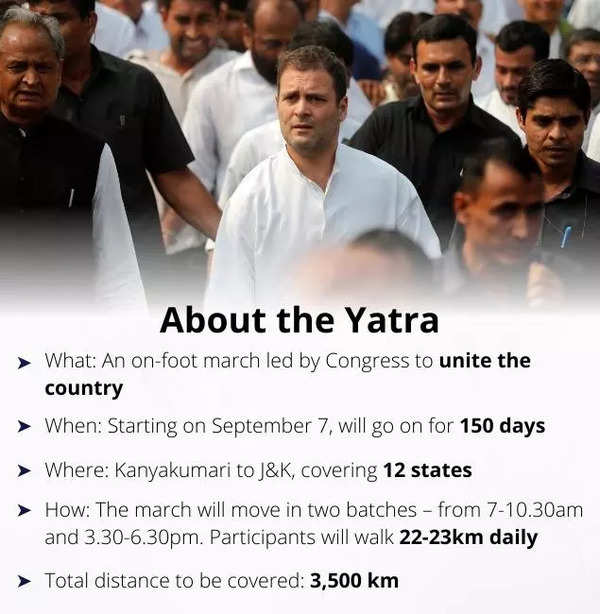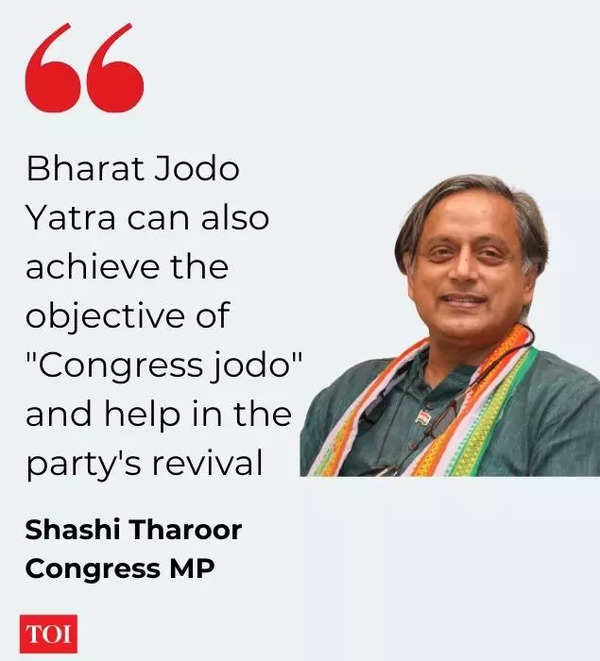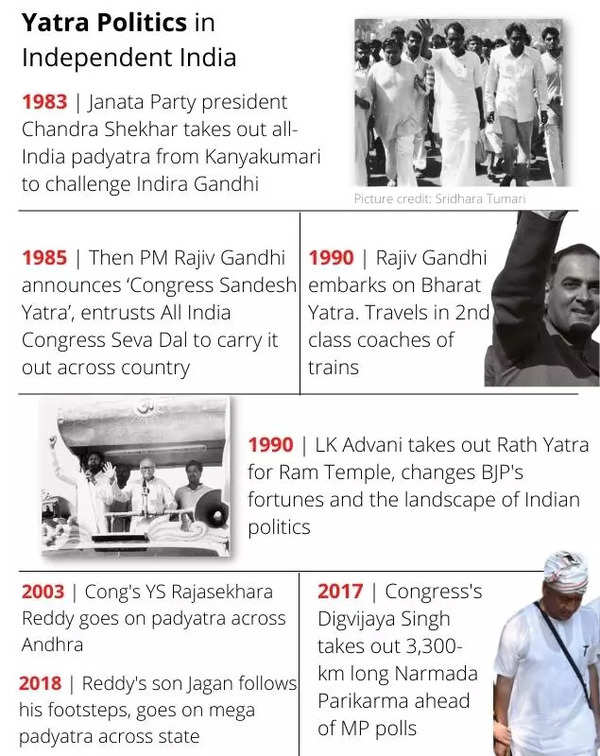Rahul Gandhi will spearhead the yatra which will begin from Kanyakumari in Tamil Nadu on Thursday and conclude in J&K’s Srinagar. A host of Congress leaders will walk over 3,500 kilometers during the campaign, which is being dubbed by the grand old party as the “turning point in Indian politics”.
Hoping for revival
The yatra comes at a time when the Congress is facing its worst-ever phase in Indian politics and is almost on the brink of decimation.
Currently, the party is in power on its own in just two states (Rajasthan, Chhattisgarh) and has been relegated to the third or fourth position in almost every state where there’s a regional player.

To make matters worse, Congress has been grappling with the issue of infighting in several states and has witnessed the exodus of many senior leaders. Ghulam Nabi Azad being the latest.
Due to its lackluster performance, several leaders have also questioned the party’s style of functioning, with the dissenting G23 leaders routinely taking on the leadership over Congress’s organisational structure.
Hence, it won’t be a stretch to presume that the yatra is Congress’s last-ditch effort to infuse energy among its dejected cadre base, activate its state units and revive hopes that it can be a formidable force in future elections.
Senior leader Shashi Tharoor has hoped that the Bharat Jodo Yatra should also become a Congress Jodo Yatra, underscoring the need for a large-scale campaign that can unite the party.

But can a pan-India movement really revive Congress’s fortunes? History says “maybe”.
Political yatras are quite common in India.
Be it pan-India padyatras or state-level parikramas, political leaders have often taken to the streets to connect with the cadres/voters with hopes to drum up support for their party whenever elections are in sight.
In fact, the concept of “yatras” predates Independent India, with Mahatma Gandhi launching the famous Dandi March back in 1930.
In the last few decades, India has witnessed some memorable yatras which have catapulted leaders from the sidelines to the highest seat of power. Whereas, others have hardly made any impact on the voters.
Let’s revisit two instances of this.
In 1983, Janata Party president and former PM Chandra Shekhar started an all-India padyatra from Kanyakumari to Delhi.
The yatra turned him into a true challenger to the Delhi throne, when Indira Gandhi was at the peak of her popularity and the Janata Party was suffering from a split.
Even though the yatra turned out to be a success, Indira Gandhi’s assassination in 1984 drowned the hopes of opposition parties and nullified all the gains. Plus, Chandra Shekhar himself was pipped by VP Singh as the leading opposition candidate by the end of the decade.
Conversely, then BJP president LK Advani announced a Somnath-to-Ayodhya Rath Yatra in support of a Ram Temple in Ayodhya. The yatra became a watershed movement for the BJP, then a struggling party. It not only brought about a tectonic change in Indian politics but laid the foundation for the BJP to dominate the same in the years to come.
Advani’s successor Murli Manohar Joshi sought to consolidate the political gains by conducting ‘Ekta Yatra’ in 1991 which culminated in him getting airlifted to Srinagar and unfurling the Tricolour at Lal Chowk.

There are several other examples of political yatras leading to immediate success while others failing to produce the desired result.
After Rajiv Gandhi lost power, he started Bharat Yatra in 1990 by travelling on trains in second-class compartments. However, the yatra didn’t produce the desired result.
I lost my father to the politics of hate and division. I will not lose my beloved country to it too.Love will con… https://t.co/xNRrg5tDsK
— Rahul Gandhi (@RahulGandhi) 1662522423000
The late NT Rama Rao’s “Chaitanya Yatra” shook up Congress in Andhra Pradesh in 1982-82. It helped TDP storm to power in the state in the ensuing elections.
In fact, the legacy of yatras in Andhra Pradesh can be best described by the twin successes achieved by the father-son duo of late YS Rajasekhara Reddy and Jagan Reddy.
In 2003, YS Rajasekhara Reddy led Congress to a thumping victory following his padyatra across united Andhra Pradesh. The same was successfully emulated by son Jagan Reddy in 2017 when he embarked on a nearly year-long yatra across the state — the longest by an Indian politician. He too led his party, YSR Congress, to power in the subsequent elections.
Similarly, Mamata Banerjee’s yatras against the Left rule helped her breach the CPM fortress in West Bengal in 2011. Congress leader Digvijaya Singh also helped his party taste success in the 2018 Madhya Pradesh polls due to his 3,000-km-long “Narmada Parikarma”.
Congress confident of success
Though there is no guarantee of success in politics, the Congress is hoping that its attempt at a grassroots reconnect will help invigorate its cadre and revive the party in time for the 2024 Lok Sabha polls.
Ahead of the yatra, Congress claimed there is a lot of “enthusiasm and excitement” among its workers across India for the yatra. The yatra is being viewed by some as a “political masterstroke”.
“This is a turning point in Indian politics. It marks a new beginning,” Congress general secretary Jairam Ramesh said on Twitter.
Notably, the yatra will cover 6 BJP-ruled states, including poll-bound Karnataka, Himachal Pradesh and Madhya Pradesh. The Congress is more or less in a direct fight with the BJP in all three states.
It will also cover poll-bound Rajasthan, where the Congress is hoping to retain power next year.
However, the yatra excludes an important state like Gujarat, which is also heading for polls soon. But it’s hard to tell whether the exclusion is deliberate or not.
Nevertheless, for a party desperate for a change in luck, the next 150 days may well set the tone for future elections and help Congress gain the momentum it needs. If not, the party will continue to stagger long after the conclusion of its padyatra.





